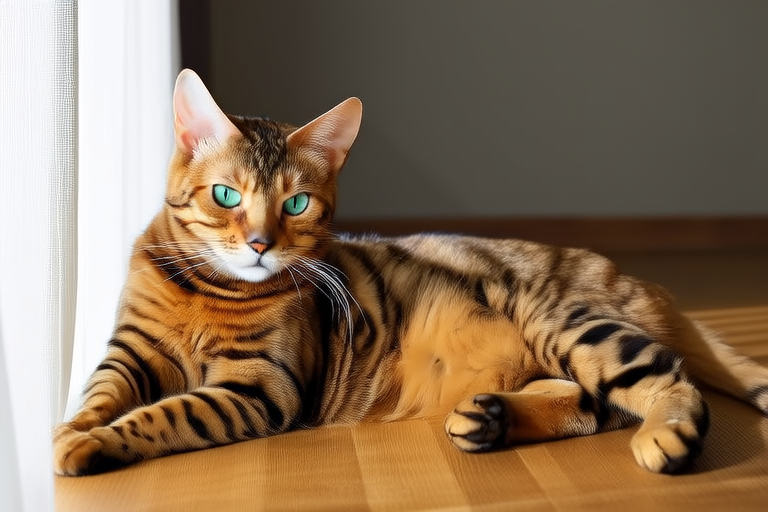Unleashing the Majesty: The Ultimate Guide to Bengal Cats
Welcome to the world of Bengal cats, one of the most fascinating and majestic breeds of felines. Known for their striking appearance and playful nature, Bengal cats have captured the hearts of cat enthusiasts worldwide. This comprehensive guide will take you through the history, physical attributes, personality traits, care requirements, health issues, training tips, dietary needs, and popular myths surrounding these magnificent creatures.
Origin of Bengal Cats
The journey of the Bengal cat began in the 1960s when Jean Mill, an American breeder, crossed domestic cats with Asian Leopard Cats (ALCs). Her goal was to create a breed that combined the beauty of wild cats with the temperament of domestic pets. Over several generations, breeders refined the breed, resulting in the stunning Bengal cats we know today. These cats are admired for their sleek coat, muscular build, and wild appearance.

Appearance of Bengal Cats
Bengal cats are renowned for their unique and striking appearance. Their coats come in various colors, including brown, snow, silver, and charcoal, with distinctive spots or marbling patterns. One of the most notable features is their luxurious, short fur, which gives them a wild, almost leopardskin-like look. Their large, almond-shaped eyes add to their exotic charm, often appearing in shades of green or gold.

Temperament of Bengal Cats
Bengal cats are known for their friendly and outgoing personalities. They are highly social animals that enjoy interacting with their human companions. Dr. Jane Smith, a renowned animal behaviorist, notes, “Bengals are incredibly intelligent and curious, often seeking out new experiences and environments.” These cats are also very active, requiring plenty of mental and physical stimulation to keep them happy and healthy.
Care Requirements for Bengal Cats
Proper care is essential for maintaining the health and well-being of your Bengal cat. Regular grooming is necessary to keep their coats shiny and free from mats. Dr. Sarah Johnson, a veterinarian specializing in feline care, advises, “Brushing your Bengal cat at least once a week can help remove loose hair and prevent skin irritations.” Additionally, providing ample space for play and exercise is crucial, as Bengals are naturally athletic and love to climb and explore.
Health Issues in Bengal Cats
While Bengal cats are generally healthy, they may be prone to certain genetic conditions. Hypertrophic cardiomyopathy (HCM) is one such issue, characterized by thickening of the heart muscle. Early detection through regular veterinary check-ups is vital for managing this condition. Another common concern is patellar luxation, a knee joint disorder that can cause lameness. Ensuring your Bengal cat leads an active lifestyle and maintains a healthy weight can help reduce the risk of these issues.
Training Tips for Bengal Cats
Training Bengal cats can be a rewarding experience. Positive reinforcement techniques, such as treats and praise, work best. Start by teaching basic commands like ‘sit’ and ‘come,’ then gradually introduce more complex tricks. Patience and consistency are key, as Bengals are quick learners but may become easily bored with repetitive tasks. Interactive toys and puzzle feeders can help keep their minds engaged during training sessions.
Diet Specifics for Bengal Cats
A balanced diet is crucial for the overall health of your Bengal cat. High-quality commercial cat food, rich in protein and essential nutrients, is recommended. Wet food is particularly beneficial as it provides moisture, aiding in hydration. Avoid feeding your cat excessive amounts of carbohydrates, as these can lead to weight gain and other health problems. Always consult with your veterinarian to determine the appropriate portion sizes based on your cat’s age, activity level, and specific dietary needs.
Popular Myths About Bengal Cats
Despite their popularity, many misconceptions surround Bengal cats. One common myth is that they are aggressive due to their wild ancestry. However, with proper socialization and care, Bengals can be loving and affectionate pets. Another misconception is that they require less attention than other breeds. In reality, Bengals thrive on interaction and mental stimulation, making them ideal companions for active individuals or families.

Conclusion
Bengal cats are truly majestic creatures, combining the elegance of wild cats with the loving nature of domestic pets. Whether you’re a first-time cat owner or an experienced pet parent, understanding the origins, characteristics, and care requirements of Bengal cats can enhance your relationship with these extraordinary felines. By providing them with the right environment, nutrition, and attention, you can ensure that your Bengal cat leads a long, healthy, and fulfilling life.
